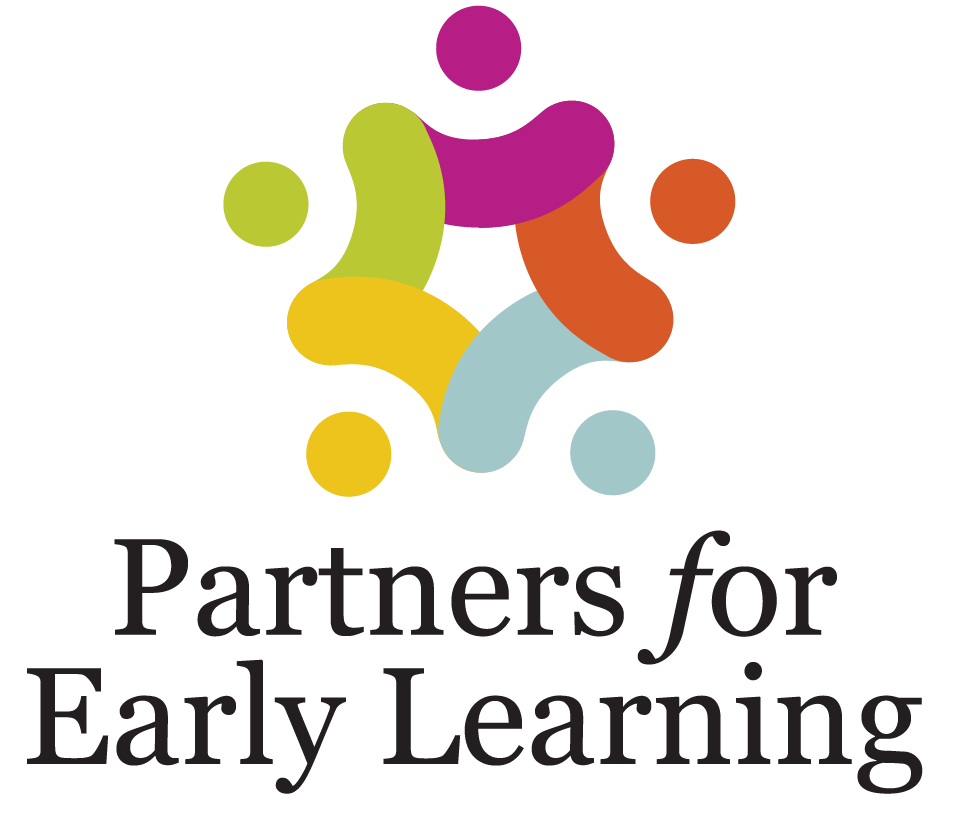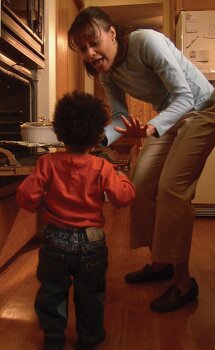Guiding your baby with your facial expressions and words.
Eleven-month-old Cameron can walk, and he can go just about anywhere very quickly. Sometimes his mom even has trouble keeping up with him!
Today Cameron sees the corner of the bright red tablecloth hanging off the dining room table. He can’t see what’s on top of the table, but he really wants to grab the tablecloth and pull on it. He doesn’t know that the table is set for dinner – and that he might hurt himself if he pulls off the tablecloth.
Across the room, Cameron’s mom sees him near the table. She looks at him with dear and surprise on her face. As Cameron reaches up for the tablecloth, he looks at his mother. The look on her face tells Cameron everything he needs to know – danger! He stops reaching for the tablecloth and moves away from the table.
The power of expression.
Cameron saw his mom’s worried face and knew he should not pull the tablecloth. Cameron, like other babies around 12 months old, can read the emotions he sees on people’s faces. He knows what certain facial expressions and tones of voice mean – like “Don’t do that” or “It’s okay to play with that.” By 12 months, babies look at the faces of their parents and caregivers to make sense of new situations. For example, your child might look at you and wait for a smile and a nod before touching a bug or even a strange new toy.
It’s written on your face.
Your one-year-old is watching your face and learning from you all the time. As your baby’s first and most important teacher, you help her learn by how you react. When she looks to you for guidance, your expression tells her what is and is not okay. Your expression can warn her of danger and may stop her from doing something harmful. Your looks can also tell your child how you feel. For instance, if you smile and nod when you’re introducing a new person or even a new pet, she will know that you feel safe, and she will probably feel a little more comfortable.
Helpful parenting tips
- Enjoy some “face time” with your baby. Show him what feelings look like. This will teach him to recognize a wide range of emotions.
- Sometimes your face may say one thing while your voice or actions show a different feeling. Since your baby is “reading” your face, try to give him clear signals.
- Not all children will be stopped all the time by a grown-up’s expressions. Sometimes, you need to say, “That’s not safe. That could hurt you. Let’s play with something else.” One-year-olds focus on your facial expressions and will usually respond the way you want them to. Older children may check your reactions to things, but they are becoming more independent and may be less influenced by your expressions.
- Your face tells your child a lot about how you feel, whether it is happiness or sadness. Don’t hide your feelings.
- Share the things you enjoy with your baby, as well as show him things to avoid.
- Smile and nod when you introduce your baby to new people, pets, and toys you hope they will enjoy.
Your one-year-old is watching your face and learning from your expressions all the time. Your baby is learning the important skill of reading faces and emotions. You are your baby’s most important teacher. So have fun, and remember, your baby learns by watching you.

